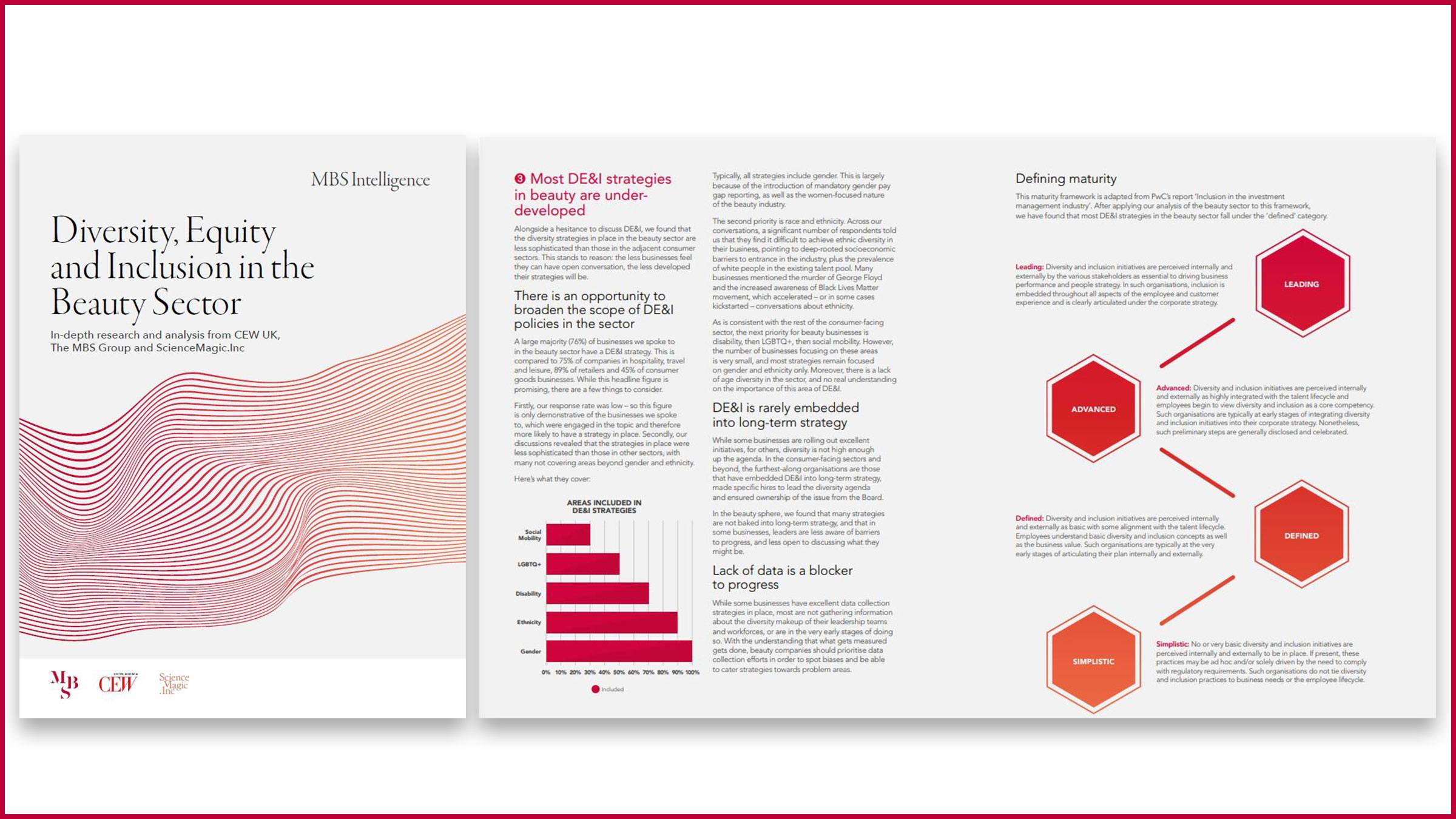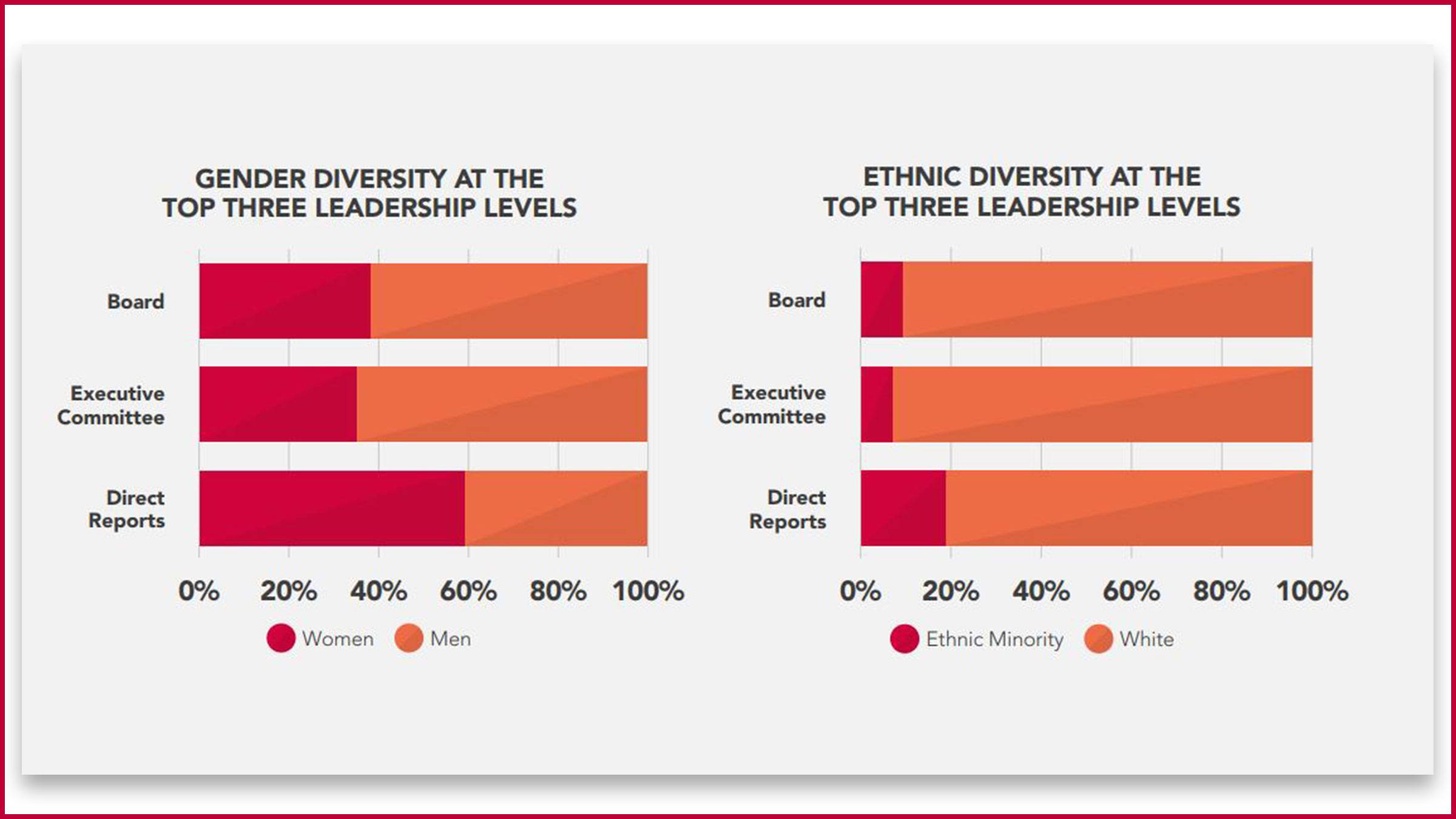The beauty industry has never been more exciting or vibrant than it is today. This week alone, we’ve seen Dolce & Gabbana commit to investing €300m in the category to take production in-house; ecommerce giant Boohoo launch its own range, and Coty register a quarterly sales increase of 12%. In the long term, the industry has evolved considerably in the past twenty years, as narrow definitions of beauty are replaced with broad product ranges, diverse models and marketing efforts which celebrate inclusivity.
Against this backdrop, The MBS Group set out to discover whether this progress has been reflected in the sector’s leadership teams. After all, with an increasingly diverse customer base and product offering, it is critical for beauty businesses to build senior teams which reflect the communities they serve.
Now, in partnership with CEW UK and ScienceMagic.Inc, we are delighted to present this report, looking into the status of diversity, equity and inclusion in the beauty industry. By reaching out to the 100 largest companies operating in Europe, we have gathered quantitative and qualitative data which demonstrates the diversity of the industry’s leadership teams, and the extent to which organisations are prioritising DE&I. Our research found that while there is an appetite for progress, and a number of excellent initiatives in place across the sector, there is still a long way to go.

Excitingly, beauty businesses have a number of unique opportunities which make the industry well placed to progress on DE&I – and to quickly see its benefits.
First, businesses should take advantage of the changing standards of beauty, and adapt leadership teams to reflect the sector’s increasingly inclusive marketing and product efforts. Companies can capitalise on the sea-change in attitudes to bring in new leaders with different worldviews, ideas, and ways of working.
Second, beauty’s customer base remains predominantly made up of women – and businesses should strive to reflect their consumers in their leadership teams. It makes clear business sense to build senior teams which can relate to the needs of their customers.
Third, there is a healthy pipeline of female talent in the beauty sector. Almost three-fifths of direct reports into the executive committee are women, providing a unique opportunity for beauty firms to promote home-grown female talent into the most senior roles. Indeed, in other sectors, companies often cite the lack of a female talent pipeline as one of the main blockers to progress on gender diversity.
“Businesses should strive to reflect their consumers in their leadership teams. It makes clear business sense to build senior teams which can relate to the needs of their customers.”
So where are we now? Our research found that the beauty industry is performing relatively well on female and ethnic minority representation, but that progress is not widespread and that most senior roles are still held by men.
We found that:
- Over 65% of executive committee seats in the beauty industry are held by men
- Just over half (51%) of businesses have no ethnic diversity on their executive committee, and
- Just under half (48%) of businesses have no ethnic diversity on their board

Beyond the headline figures, we found that the diversity strategies in place in the beauty sector are less sophisticated than those in the adjacent consumer sectors. Our research revealed that many strategies are not baked into long-term strategy, and that in some businesses, leaders are less aware of barriers to progress, and less open to discussing what they might be. A lack of data is also a key roadblock, with only the largest multinational conglomerates reporting to have data collection programmes.
There is also a real hesitancy among leaders in the beauty sector to discuss the topic of DE&I. Of the 100 largest beauty companies operating in the UK, fewer than 50% responded to our request to be interviewed for this research, despite strong relationships between the brands and this report’s authors. In one case, a business opted not to be included as a case study, despite performing excellently on diversity and having one of the most advanced DE&I strategies.
“There is also a real hesitancy among leaders in the beauty sector to discuss the topic of DE&I. Of the 100 largest beauty companies operating in the UK, less than 50% responded to our request to be interviewed for this research, despite strong relationships between the brands and this report’s authors.”
Another theme that resonated strongly in our conversations was the socioeconomic barrier to entrance in the beauty sector. This blocker can significantly limit diversity of thought, and have a negative impact on ethnic minority representation in particular. While the beauty services sector is known for being an accessible industry to those from different ethnic and socioeconomic backgrounds, corporate roles remain dominated by employees from relatively privileged backgrounds. One driver of this trend is the industry’s historic reliance on unpaid or low-paid internships as vehicles to entry. As these internships very often take place in metropolitan centres with a high cost of living, they are inaccessible for many.
Despite these challenges, there are plenty of green shoots in the beauty industry. Pockets of best practice can be found right across the sector, from inspirational businesses of all scopes and sizes that are driving positive and lasting change. The beauty sector is home to some highly comprehensive DE&I frameworks; best-in-class academy schemes; and forward-thinking partnerships with external organisations. Included in the report are case studies from Benefit Cosmetics, Estee Lauder and Revolution Beauty, which provide insight from businesses at different stages of their journey on how to implement strategies and encourage inclusive environments.
Through this report, which you can read in full here, we hope to shine a light on the industry, provide examples of best practice that can be replicated, and kick-start an important conversation about how to foster inclusive organisations and drive-up diversity. I’m excited about what’s to come – this is only the beginning.








